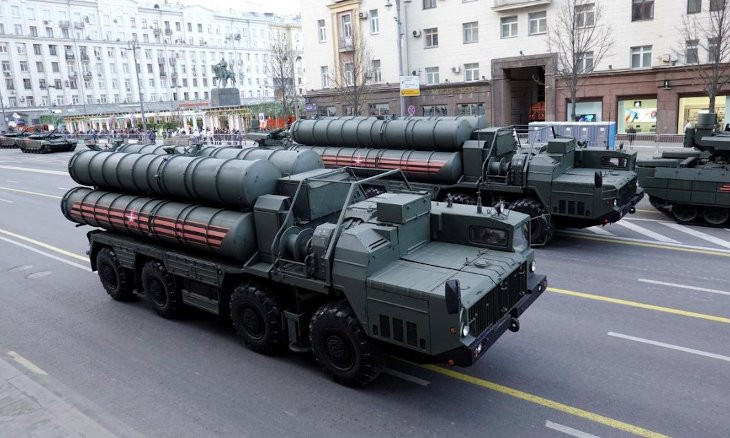Russia says Turkey cannot re-export S-400 air defense systems after US senator's proposal to buy them
Russia has said that Turkey cannot re-export Russian-made S-400 air defense missile systems without Moscow's permission. The statement came after U.S. Senator John Thune prepared a proposal to buy the S-400s from Turkey in a bid to overcome the impasse between Washington and Ankara over Turkey’s participation in a program to produce F-35 Lightning II fifth-generation fighter jets.
Duvar English
Turkey cannot re-export Russian-made S-400 defense systems without Moscow's permission, Interfax news agency reported on June 30, citing a spokeswoman for Russia's federal service for military-technical cooperation, Maria Vorobyova.
 Russia ready to seal another S-400 deal with Turkey
Russia ready to seal another S-400 deal with TurkeyRussia's statement came after U.S. Senator John Thune, Senate Majority Whip, prepared a proposal to buy the S-400s from Turkey in a bid to overcome the impasse between Washington and Ankara over Turkey’s participation in a program to produce F-35 Lightning II fifth-generation fighter jets.
Leonid Slutsky, chairman of the Russian State Duma Committee on International Affairs, also commented on the issue on June 30, saying: "Republican Senator John Thune's proposal to buy S-400s from Turkey, supposedly to resolve the conflict between Ankara and Washington, is unprincipled and cynical."
"But I believe that such a thing will not be possible and this proposal will not be taken into consideration by Turkey," Slutsky was quoted as saying by Sputnik.
According to Defense News, U.S. Senator Thune has proposed an amendment to the 2021 National Defense Authorization Act (NDAA) that would allow the purchase to be made using the U.S. Army’s missile procurement account.
Meanwhile, Senate Foreign Relations Committee Chairman Jim Risch has introduced a tougher amendment, which envisages slapping Turkey with sanctions under CAATSA (Countering America's Adversaries Through Sanctions Act) 30 days after NDAA enters force.
According to Defense News, although Thune and Risch are both influential senators, "there’s no guarantee either of their amendments would receive consideration to be included in the massive NDAA or, if passed into the Senate bill, that they would survive negotiations with the House."

Russia announced in September 2017 that it had signed a $2.5 billion deal with Turkey on the delivery of S-400 anti-aircraft missile systems to Ankara. Under the contract, Ankara received a regiment set of S-400 air defense missile systems (two battalions). The deal also envisages partial transfer of production technology to the Turkish side.
Turkey is the first NATO member state to purchase such air defense missile systems from Russia. The deliveries of S-400 launchers to Turkey began on July 12, 2019.
Turkey’s decision to acquire the Russian-made S-400 surface-to-air missile systems has caused a sharply negative reaction from the United States and NATO as a whole. The United States insists that Turkey must give up the Russian air defense systems.
 Russia expects Turkey's final decision delivery of second batch of S-400 missile defense systems
Russia expects Turkey's final decision delivery of second batch of S-400 missile defense systemsAs Turkey has said that it will not give up the S-400 systems, Washington has excluded Ankara from the US program of developing the fifth-generation F-35 fighter-bomber.
The United States is also threatening Turkey with unilateral sanctions over the purchase of S-400 air defense systems but is in no hurry to take these steps out of fear of further worsening relations with a major NATO ally while Ankara has warned it will not leave the imposition of these restrictions unanswered.
The S-400 ‘Triumf’ is the most advanced long-range air defense missile system that went into service in Russia in 2007. It is designed to destroy aircraft, cruise and ballistic missiles, including medium-range weapons, and can also be used against ground installations. The S-400 can engage targets at a distance of 400 km and at an altitude of up to 30 km.
